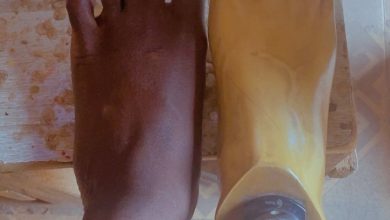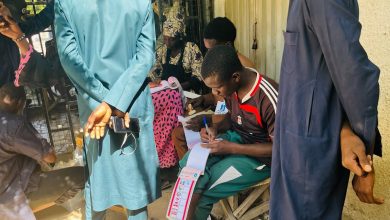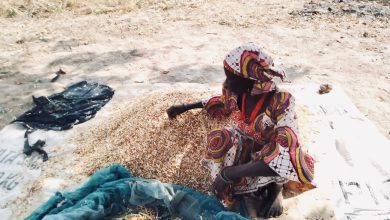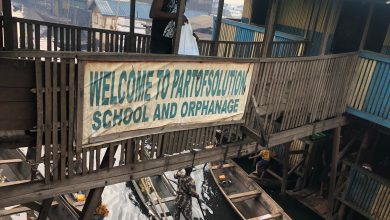The Price Of Being Fulani In Northwestern Nigeria
Like others, many Fulani people are victims of terrorist gangs in Nigeria's North West. But ethnic profiling doubles their misery, Fulani herders face violent harassment from other communities trying to protect themselves from terrorists.
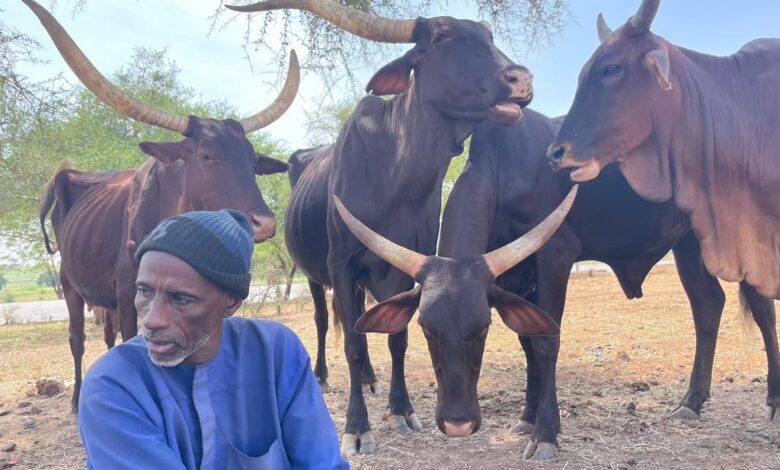
On a sweltering Wednesday morning in April, a death sentence was served on five young Fulani men.
It was summarily delivered by a group of volunteer vigilantes known as Yan Sakai near Sakamaru, a community in the Gwadabawa area of Sokoto State.
The killing was not well reported in the media, but it typifies the problems currently facing Fulani communities in North West Nigeria.
Because of the high profile of some Fulani criminals involved in the terrorism sweeping the northwestern states, innocent Fulani communities have been targeted in response.
On that day villagers were loading animals onto commercial trucks to be taken to Achida, a town in the local government area of Wurno, about 30 kms from the state capital Sokoto.
It was a market day in the town, famous for its livestock trade.
Suddenly, a herd of cattle trooped back into the village. Not long before, a young Fulani pastoralist had taken the herd out to graze at the outskirts of Sakamaru.
But something was wrong. The boy never returned, the young man was missing.
Shocking
Four Fulani youths, brothers of the cattle tender, delayed their trip to Achida and went to find out what happened.
A few miles into the bush, they learned that the boy was taken and killed by Yan Sakai, vigilantes from the nearby village of Gigane. The brothers continued, hoping the news was wrong, that the boy was only caught and detained and could be freed.
But on their way, a group of Yan Sakai encircled the boys and brutally murdered them.
The boys’ father, Alhaji Kiruwa, died from a heart attack shortly after hearing of the incident.
50-year-old Umaru, a displaced Fulani man from Sakamaru, looked dispirited as he narrated this story. It still shocks him that five of his relatives were killed simply because they were stereotyped as kinsmen of “bandits.”
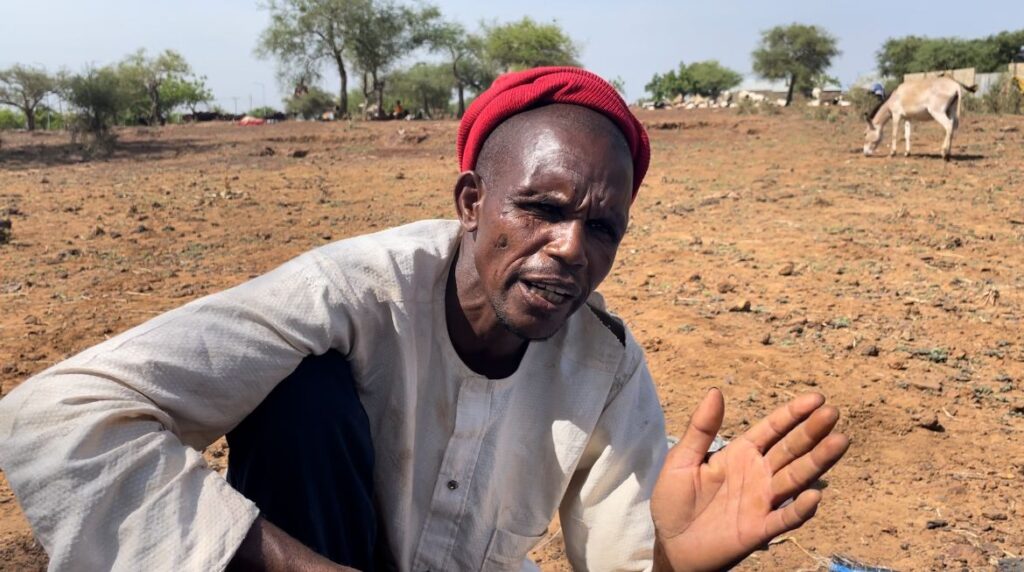
In July HumAngle met Umaru, Garba, Hantsi, and Attahiru with their families taking refuge on a rocky landscape in Kwalkwalawa village, a stone’s throw from the famous Bilya Sanda Gate of Usmanu Danfodiyo University, Sokoto (UDUS).
They narrated to me how they and other Fulani families displaced from different communities under Gwadabawa, had to flee their ancestral communities because people of their ethnic identity were no longer safe there.
Tight spot
A variant of terrorism, locally known as banditry, has been ravaging northwestern Nigeria since 2011.
From cattle rustling to mass abduction, highway kidnapping, and raiding of rural communities, terrorist gangs have used multiple channels to wreak havoc on local populations in return for their own material gain.
The worst-hit states are Zamfara, Sokoto, Katsina, Kaduna, and Kebbi. The violence is complex, with the circle of perpetrators – informants, suppliers of essential materials and fighters – formed by criminals from diverse ethnic backgrounds.
Media reports and even academic work have, however, identified most of the fighters as being Fulani. The label has stuck.
Fulanis who are not involved in the criminality face pressure from both terrorists and the communities the terrorists victimise, making them candidates for being the most terrorised people in the region.
No official data indicates how much innocent Fulani have lost to the ongoing conflict, but a research report by Global Initiative Against Transitional Organized Crime suggests that over 215,000 cattle and more than 162,000 other valuable animals belonging to pastoral Fulani communities were rustled within eight years (2011-2019) in Zamfara alone. About half of this figure was rustled in Katsina and Sokoto, and a quarter of it in Kaduna State between 2012 and 2022.
In Dec 2022, a Fulani union, the Miyetti Allah Cattle Breeders Association (Macban), revealed that across the country that, “over 10,000 (Fulani) cattle farmers have been killed and more than 2 million others displaced due to activities of rustling, kidnapping and general insecurity in eight years.”
A significant portion of these figures come from the northwest, where law-abiding Fulani are in a tight spot. They have experienced devastation not only from the terrorists but also from other community members, particularly the vigilante outfit known as Yan Sakai, which means “the volunteers” or “those committed to protecting their area from criminals”.
Ruthless
The Yan Sakai model of vigilantism emerged in Zamfara around 2014 when the violence of criminal gangs reached an unprecedented stage, and formal security agencies failed to tame it. Young, mostly jobless men from farming communities joined up in the hope of making a living. It also attracted people who saw it as an opportunity to take out their resentment on others.
Like a bushfire, the model spread rapidly to neighbouring states.
With a deeply held belief that the violence of the terrorists could only be tamed by greater violence, groups of Yan Sakai embarked on ruthless reprisals against the terrorists, leading to an intractable war of vengeance between the two sides.
This melee comes with a lot of collateral damage.
Contradictions and difficulties in identifying the mostly Fulani terrorists, for instance, prompted Yan Sakai to declare war against Fulani communities in many of the conflict zones.
According to Dr Murtala Ahmed Rufa’i, Associate Professor of History and Conflict Studies at UDUS, the situation became hopeless due to the crooked nature of many members of the Yan Sakai groups.
“Within the groups of Yan Sakai,” he said, “you can find all sorts of criminals because any drug addict could end up being a member and he will be supported by the community. The communities remain helpless to a very large extent because the security forces are not doing what they are supposed to do.”
Everyone a victim
Between 2020 and 2022, the conflict peaked. Law-abiding Fulani groups were subjected to high-level human rights violations. They became victims of ethnic profiling and extrajudicial killing by Yan Sakai and other community members, particularly in the crisis-affected areas of Zamfara, Kebbi, Katsina, and Kaduna.
Ethnic profiling against the Fulani has receded in some parts of the region. However, in the different pastoral (herding) and farming communities from where Umaru and his fellow IDPs hail in Gwadabawa, the trend has only just begun.
“We began encountering occasional terrorist attacks around three years ago, but the problem became worse this year,” said Hantsi, a 65-year-old father of five, displaced from Waiyaka.
Hantsi’s assertion was confirmed by Attahiru, 65, his peer from Maimasu, who added that everyone he knew had been a victim.
“Whenever criminal gangs attack, they don’t differentiate between victims; they attack us [Fulani] the way they attack the Hausa people. They rustle our animals as much as they rustle those belonging to the Hausa. They also kill people,” he said.
“Later,” Attahiru added, “some Hausa folks began saying that all those criminals are Fulani; that they are our relatives. Therefore, whenever the criminals kill any of them, they would revenge on us. And now, they are doing it.”
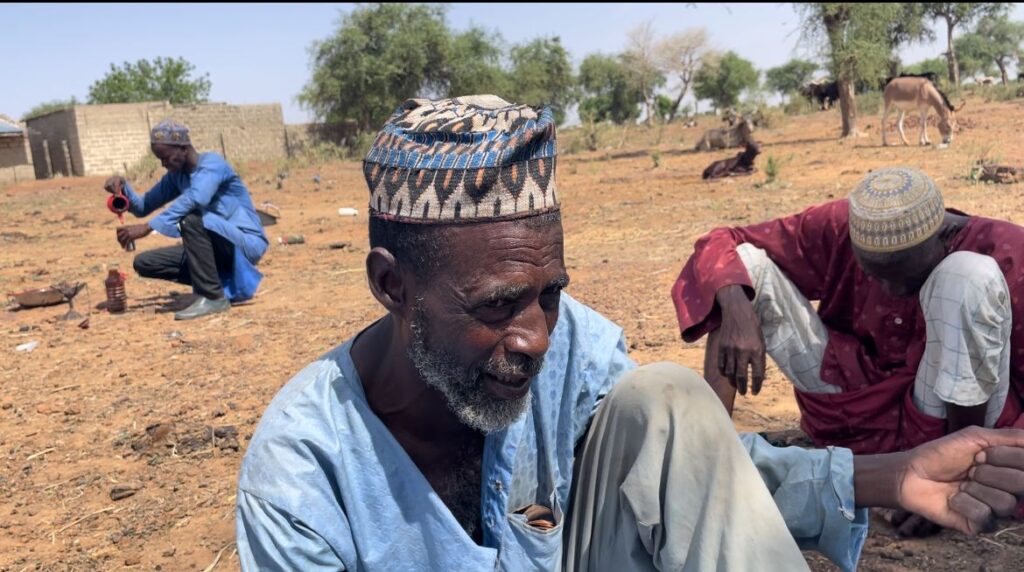
The Internally Displaced People (IDPs) painfully recounted various incidents where they were at the receiving end of revenge attacks by locals following terrorist attacks they knew nothing about or attacks that affected even them.
They confessed to having lived peacefully with the Hausa people they shared the same community or boundaries with, lamenting how they were forced out of their homes by the horrors of Yan Sakai from some other communities who are not acquainted with them.
They collectively identified Yan Sakai from Gigane and Tungar Tudu communities as particularly vicious and violent.
“Whenever the terrorists kill their people, say on farmland, they retaliate on Fulani living in nearby villages. They know where the terrorists are, but they don’t go there,” Umaru told HumAngle.
‘Toxic stock’
Garba, 50, from Shan Yasu, told how a small boy was killed in Sakamaru in June during a raid by Yan Sakai from Gigane.
“The boy’s hand was held by his mother as they both ran for their lives,” he said. “One of the Yan Sakai seized and handed the boy to his fellow. They used cutlass and sliced the boy to death while the mother cried helplessly.”
Attahiru also recounted how anti-Fulani sentiments began emerging in the area. “Yan Sakai from Tungar Tudu allied with their counterparts from Gigane. They created roadblocks and checked every passing car. Once they see a person with Fulani physique, they fish them out and kill them.”
“They say it openly, that they will eliminate the Fulani stock. We used to hear them with our ears, saying we are a toxic stock that must be vanished for peace to reign. That is why we felt that before they destroy us, we need to flee.”
Dr Rufa’i said this is widespread across the eastern part of Sokoto state. He confirmed that from about two years ago, checkpoints were set by Yan Sakai in different communities to extort, harass, and even kill Fulani people.
“The checkpoints are many,” he said, “there is no way one could actually bypass them.”
“You will find a checkpoint of two or three people here, and after a half-kilometre, you find another one. There is no way you can dodge them,” Dr Rufa’i emphasised.
Milk
According to the conflict historian, anti-Fulani sentiments in Gwadabawa became glaring when people began to avoid consuming dairy products.
This was promoted by an unfounded notion held by Yan Sakai that terrorists encouraged the Fulani milkmaids to mix cow milk with human urine, Dr Rufa’i said.
“The belief is when the milk is adulterated with urine, any member of the vigilante that buys and drinks it will have his local charms broken. So on that basis, everyone refrained from drinking milk.”
So even before they began to expel the Fulani from their communities, it was common for Fulani women to be blocked at checkpoints where the Yan Sakai harassed them, breaking their calabash bowls of dairy products.
The situation of law-abiding Fulani groups in the conflict zones of northwestern Nigeria is complicating their position in the ongoing crisis.
While they remain victims of terrorist gangs, they are unfairly villainised by other community members, particularly Yan Sakai. In a region where terrorist kingpins have previously justified taking arms in self-defence, the double victimisation of innocent Fulani could radicalise them to take up arms against society.
Moving out
Most Fulani families HumAngle met at Kwalwalawa said they moved out of their ancestral communities during the Islamic month of Ramadan, between March and April this year. Others fled as late as June.
Though coming from different communities, many families have prior acquaintance with each other because of the proximity of their villages. At Kwalkwalawa, they are bound by a common experience; being expelled from their ancestral communities simply because they are Fulani.
Their navigation of displacement, they said, has opened another phase of agony for them.
With his family, a few movable belongings, and a herd of animals, Hantsi recounted how he left Waiyaka at midnight with no clear destination. “On that day, five persons, our relatives, were killed in a nearby community. We used to feed our animals in the same grazing field with them,” he recalled.
Following that incident, Hantsi’s children insisted that they should leave before the following morning. They were afraid they could be the next target of the Yan Sakai.
Running all night
In Attahiru’s case, his entire community at Maimasu was displaced in April after a sudden offensive from Yan Sakai. He recalled with shocking detail, how the onslaught prompted a mass exodus from the pastoral Fulani community.
“Many of us have no donkeys, so we carried our children on our necks. We didn’t see it coming. We spent the night running with our families. As we ran, women were falling and picking themselves up.”
“As we moved, a pregnant girl got into labour,” he said, adding that she eventually gave birth after they camped at Tashar Illela, an area at the fringes of the Sokoto metropolis.
Garba, from another predominantly Fulani community, said the entire community was razed when Yan Sakai attacked during Ramadan.
“They came around 3 pm and scattered us at Shan Yasu. In the afternoon! We ran for our lives! By Allah, we had to break our fast. It was pitiful how everyone was running, including small children and women. After that incident, everyone decided to leave the community and go their separate ways.”
In Sakamaru, which is inhabited by both Hausa and Fulani, Fulani families had always lived with the fear of the horrors of Yan Sakai from Gigane. But they refused to move out until June. According to Umaru, they had a reason.
“We were scared. We wanted to flee, but we were convinced that they (Yan Sakai) would not attack our community because there are Hausa people in the community.”
Razed communities
The Fulani in Sakamaru were made to believe that they could only be affected if they wander outside the boundaries of their community. This, however, changed in June when the Yan Sakai launched a raid against Fulani households in Sakamaru.
“There was no chance for an escape, so we had to run into the houses of our Hausa neighbours in search of safety. They burned our houses. They also caught two Fulani boys at the motor park and killed them. In the night, we decided to flee because we heard they would likely come back.”
The activities of Yan Sakai have displaced most of the pastoral communities in Gwadabawa. “From Gwadabawa town up to Illela [along the Nigerien border],” Umaru said, “there is no single Fulani settlement that has not been displaced. Not even one! They have all been razed!”
Some of the sacked villages he mentioned include Shan Yasu, Yolabale, Karanbi, Magangari, Mai Masu, and Gidan Anazar.
The various groups of IDPs said they navigated months of migration and settlement in various parts of the state before they finally converged in Kwalwalawa.
Many Fulani people displaced from communities in Gwadabawa, particularly the aged and physically challenged, have moved to the Sokoto metropolis, where they either live in rented apartments or wander around in search of shelter.
Those with herds of animals cannot live within the metropolis. Instead, many moved north towards the Niger Republic in search of pasture.
Travails of displacement
Rocky and rough, with scattered shades of Bagaruwa trees, the open space near the Bilya Sanda Gate of UDUS in Kwalkwalawa is not favourable for human habitation.
But that is where HumAngle found the IDPs living.
They have to live there to be at peace with the host community because that is the only place where there are no houses or farms.

“We are living here because we have no option. It is peaceful here, but we are uncomfortable. Together with our animals, we are living in hardship,” Umaru cried.
Their major challenge is feeding. They have to sell some of their animals to buy food and foot other bills. Their women also sell dairy products in the host community. With the increase in fuel price, which has affected the prices of food items, animals and dairy products cannot fetch enough money for them to buy sufficient foodstuff.
Stolen grain
“Didn’t you see me taking animals to market yesterday?” Hantsi asked this reporter, when asked about how they are managing to buy food. “One he-goat that I sold could only buy ten measures of grain for me.”
When asked if the grain was rice, he said with shock: “Rice?! I bought only maize. I couldn’t even add sorghum to it. It is over there,” he pointed towards his family. “They are already processing it.”
Remembering the abundance they left back home makes their situation even more unbearable. “Our farms are there. Back home, I have stores full of grains. I phoned and requested someone to process the grains and send them to me, but he couldn’t find them. The people (Yan Sakai) claimed they have seized our grains and farmlands,” Hantsi lamented.
“We also left our stores full of food, but we were later told that it is no longer there,” Attahiru added.
The IDPs are equally finding it difficult to feed their cattle. They only take out a manageable number of animals for grazing every day to avoid encroachment on farms. They buy feed for the remaining animals.
“If you insist on feeding your animals to satisfaction, you can spend N10,000 ($13) every day, which is unaffordable. They (the animals) are just managing.”
Another major challenge is shelter. They live in an open space with no rooms or tents. Avoiding the scorching sun of Sokoto was a daily routine for the IDPs, who chase after the sparse shades of Bagaruwa trees as the sun moves from east to west.
“When it is raining,” Umaru adds, “we use packing nylons to cover our children. Rain will beat them, but they can only cry and shut their mouths when they get tired.”
They defecate in open spaces and only take their baths when it is dark. They live in great discomfort, deprived of basic pleasures such as marital intimacy and sleep.
Hantsi told me how he coordinates other men to stay awake at night to guard their animals and restrain them from encroaching on nearby farms.
They spread ground covers and flame up their locally-made charcoal stove, he said. Sitting there, they socialise while preparing and drinking Ataya tea, spiced with anti-sleeping substances. They do this repeatedly while they watch the remains of the night slip away.
Turning back or moving farther?
Hantsi expressed how dear his hometown is to him.
“The grave of my grandmother is there in my family house and that of her husband, my grandfather, is on the farm. My father was born there. His grave is also there.”
Many of the displaced people said they had never had to flee their ancestral communities until this year. They abandoned priceless assets and are eager to return home, provided their safety is guaranteed.
“What we want is a thorough investigation,” Garba said, as he pleaded for the intervention of relevant authorities to probe and fish out anyone found guilty of terrorism, even if they are Fulani persons.
“Whoever is innocent should be allowed to live in peace. By Allah, if they mend these problems, we can return home today. With our houses and farmlands in which many of us cultivate over fifty, two hundred, or even three hundred bundles of cereals, we cannot afford to continue living on this dry ground. Where can our animals find a grazing field here?”

But not everyone is contemplating returning to their home communities.
As heads of displaced Fulani families, Attahiru said, they once approached the District Head of Gwadabawa, who is based at their local government headquarters, to work out a possible solution. They sought his assistance to reclaim their farmlands and move back home.
“He advised us not to go back if we have found another place where we live peacefully. He said he will not deceive us and ask us to go back because he cannot assure us of protection from the atrocities of those drug addicts [Yan Sakai],” Attahiru recalled.
They were further frightened by rumours from their communities that the Yan Sakai occasionally visit to check if they are back.
According to Attahiru, there was a time when the Fulani of Karambi, a town that borders his village in the west, went back home after a short period of displacement, but “Yan Sakai went there and killed nine of them”. He added that since he heard about that, he felt more threatened and decided not to return.
Although the IDPs planned to move into thicker forests to find pasture for their animals once the rainy season stabilises, this reporter learned they have had to move much earlier because they were asked to vacate Kwalkwalwa in late July.
By now they know that more troubles, such as violent harassment and cattle rustling, likely await them where they are going.
Summary not available.
Support Our Journalism
There are millions of ordinary people affected by conflict in Africa whose stories are missing in the mainstream media. HumAngle is determined to tell those challenging and under-reported stories, hoping that the people impacted by these conflicts will find the safety and security they deserve.
To ensure that we continue to provide public service coverage, we have a small favour to ask you. We want you to be part of our journalistic endeavour by contributing a token to us.
Your donation will further promote a robust, free, and independent media.
Donate HereStay Closer To The Stories That Matter

